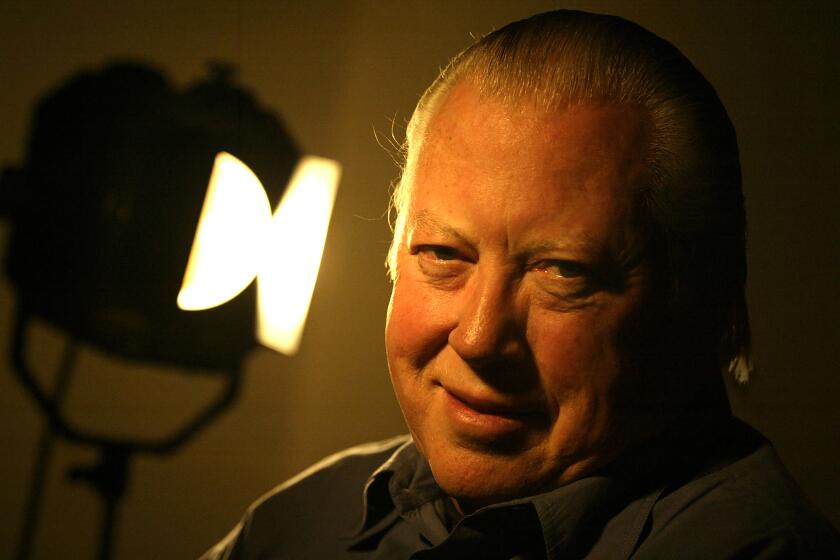Orphans on the Doorstep of Preservation
While recent attention has focused on our commercial film heritage--thanks to the American Film Institute’s controversial 100 best list--a less glamorous effort to preserve films outside the mainstream has quietly gained momentum.
These “orphans” are withering away in nonprofit archives without protective ownership. They include silents, newsreels, independents, experimental and ethnic works, as well as commercial titles in the public domain. Orphans range from Oscar Micheaux’s “Within Our Gates” (1919), the first surviving black film (airing on TCM this month), to King Vidor’s “Our Daily Bread” (1934), from the Hearst Metrotone News collection to secret footage made by Japanese American internees at an Arkansas detention camp during World War II.
But help is on the way. Two years ago, amid budgetary cutbacks at the National Endowment for the Arts, Congress created the National Film Preservation Foundation in an unprecedented public-private partnership to save these films and make them accessible. This was the deal: If the film preservation community demonstrated private support, federal matching funding starting with $250,000 would be available in 1999.
So far, the foundation, chaired by Turner Entertainment President Roger Mayer, has raised about $1.2 million in less than a year, including $500,000 from 15 film labs and post-production houses; $250,000 from the Academy of Motion Picture Arts and Sciences; $50,000 from the Directors Guild; and $50,000 from the Film Foundation, a consortium of directors headed by foundation board member Martin Scorsese.
“The archives don’t have a national voice or a single fund-raising mechanism, and there’s a lot of film lying around deteriorating,” Mayer says. “We’re not only talking about copying existing film but proper film storage, creating databanks, which should cut down on duplication of efforts, repatriating lost films lying in archives around the world and making them available to the public and historians. With the foundation, we are bridging the communities--the archives and the studios--in support of films not owned by the studios, which has never been done before. It’s also the first time that the government, beyond the Library of Congress, has acknowledged the importance of film preservation.”
With two full-time staff members and two volunteers (Mayer and copyright attorney Eric Schwartz), along with a prestigious board of directors, the San Francisco-based foundation hopes to raise $3 million to $5 million a year. Yet it won’t be easy competing with the likes of the American Film Institute and other fund-raising veterans. So the foundation has elicited professional fund-raising advice. Gaining corporate sponsorship outside the film industry should be aided by the foundation’s inclusion in the “Save America’s Treasures: The Millennium Program,” a high-profile preservation cause targeting cultural landmarks large and small.
Obviously, the main priority is to continue targeting the film community, especially the studios, indies, producers and various guilds. But how do you convince the studios to support a cause they have no financial interest in?
“By making them realize that it’s in their self-interest,” Mayer suggests. “We have to sell it based on the concept of film not just as commerce and Hollywood but as art and history worth preserving and cataloging for the future. The first step is awareness and then financing.”
Schwartz, who helped draft the congressional proposal establishing the need for the foundation, says the $500,000 pledge by the film and sound labs is a great momentum builder.
“This is the first time that they’ve pulled together like this to help out the archives,” the Washington, D.C.-based attorney adds. “In addition to the money, there’s the services in kind and expertise they are offering the archives. Now it should be easier to approach the rest of the industry. It’s a collaborative structure needed to address the scope of the preservation problem.”
Mayer has already begun pitching the studios. One has pledged support if several others will match. It’s a slow process, but he hopes to make an announcement before the year is out. Grants to archives also should be forthcoming as soon as a reviewing committee is in place. One of those grants will probably go to the preservation of the Hearst Metrotone News collection at the UCLA Film and Television Archive. There are 27 million feet of film documenting the history of this century through the late 1960s.
“Most of these newsreels have never been seen on screen; there are stories or outtakes never used,” explains UCLA archive director Robert Rosen. “The Kennedy children going to England when Joe became an ambassador; Mrs. Kennedy being captured in a spontaneous moment when she’s not conscious of the microphone. These newsreels give us insight into people not captured on the finished version.”
Rosen stresses the educational issue in selling the preservation of the Metrotone News. Regardless of corporate interest, he maintains that the newsreels reflect a history of the 20th century, including the evolution of technology, communication, fashion and other cultural imperatives. “Virtually every industrial interest is recorded in the newsreels,” he adds. “It’s of interest to donors in the private sector far beyond the movie industry itself.”
Not everyone, though, is as enthusiastic about saving the orphan films. Some in the preservation and restoration community believe it will deflect interest from the studio’s own deficiencies. Indeed, there are many commercial films owned by the majors and other corporate entities in need of restoration that have become virtual orphans. In fact, none of the money collected from the AFI’s promotion of its 100 best list is going toward preservation or restoration.
“The costly work of getting a negative to print from or a soundtrack is rarely a priority,” says AFI founder George Stevens Jr., who has also been on a crusade to save his father’s films, which include “Woman of the Year,” “Shane” and “Giant.” In the meantime, Rosen touts the establishment of the foundation as a great triumph. “The fact that the American government has provided such low-level support in the past is akin to a scandal when I encounter people outside of the U.S. The representation of American culture will be looked on by future generations with disbelief. This public-private partnership is a step in the right direction. Neither has been in place in any substantial way. We don’t preserve the status of films we hold at the archives. With funding, one is in a position to check on status. A possibility exists for solving the problem. The moment is here to put some ‘there’ there.”
More to Read
Only good movies
Get the Indie Focus newsletter, Mark Olsen's weekly guide to the world of cinema.
You may occasionally receive promotional content from the Los Angeles Times.






